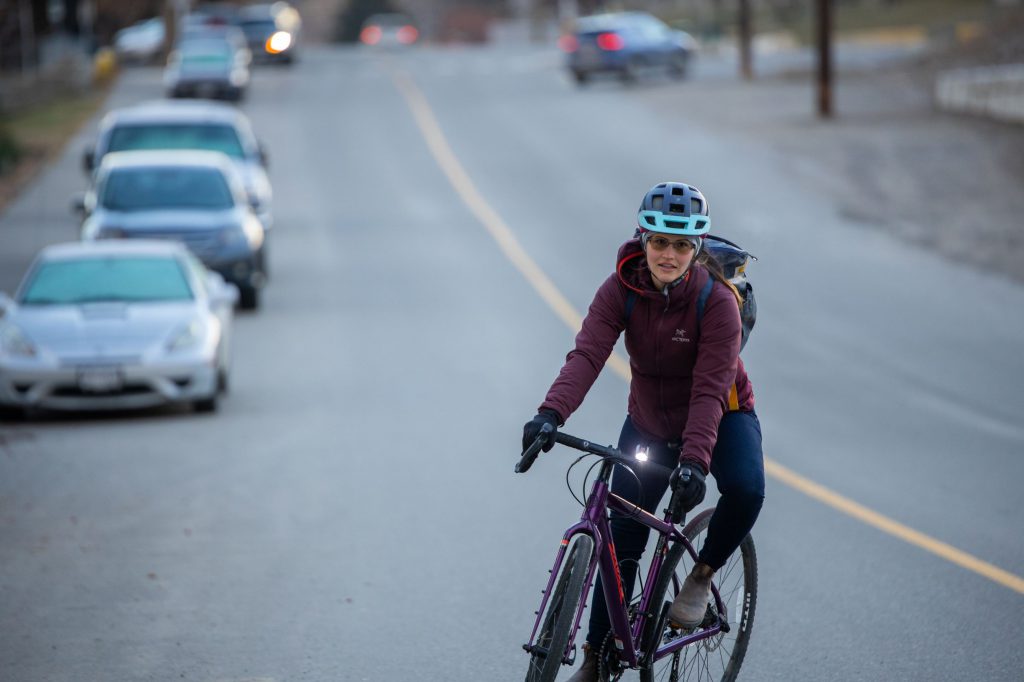
According to a general population survey, bad weather is the top reason people choose not to travel to work, school or other activities using active transportation (that’s travelling by bike, on foot, wheelchair, skateboard, skis… the list goes on). And so it’s no surprise the number of people fuelled by their own power drops with the mercury each winter.
It doesn’t have to be that way. And remember, the benefits are worth it! We end up spending so much time indoors in winter. Making active transportation a part of your regular routine gives you much-needed fresh air to combat the winter blues. It also…
- Increases your physical health and fitness
- Reduces your environmental footprint
- Saves you money: no gas, no pay parking
With a little preparation, you can reduce your dependence on motor vehicles year-round.
First off, it’s important to remember winter is more a season than it is a specific condition. What we mean by that is the active transportation experience in the Lower Mainland – “Raincouver,” for example – is going to be different than places in the north or interior. That said, the general approach is the same… plan ahead and adapt to your surroundings.
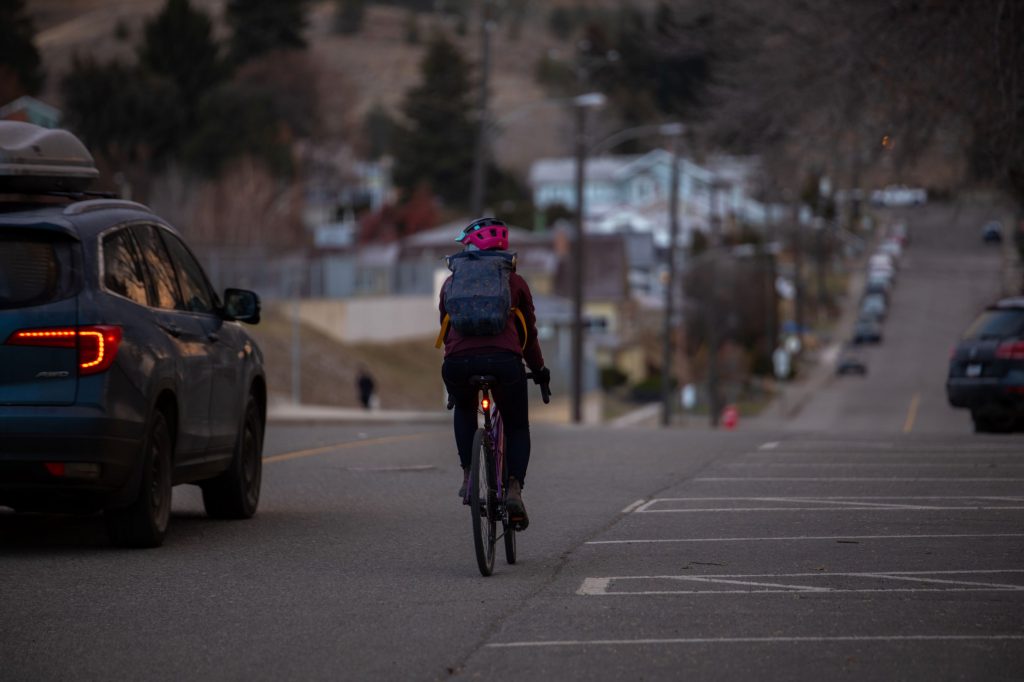
Prepare Yourself
We’re referring to both the preparation of the mind and the body here.
Mind
- Map out the safest route, and have alternatives if conditions prove challenging (for example, winter maintenance priorities differ depending on route classification).
- Test and practise routes to build confidence. Weekends are best, rather than during rush hour or when you’re in a time crunch.
- Leave plenty of time to reach your destination.
- Have an emergency kit with first aid supplies and basic repair tools on your bike or person.
- Bring a backup bus ticket or bus fare just in case you decide conditions are too severe.
Body
- Dress with layers. Being able to shed layers is important as your body temperature can increase during exercise.
- Wear a waterproof and/or windproof outer shell to keep you dry and warm.
- Wear gloves to protect your hands from cold and precipitation.
- Have a hat and/or ear covers to help prevent body heat loss.
- Wear warm socks to keep feet and toes insulated.
- Put on winter boots or warm, waterproof shoes to combat any cold air or moisture.
- Wear eye protection to shield from rain, snow and other debris.
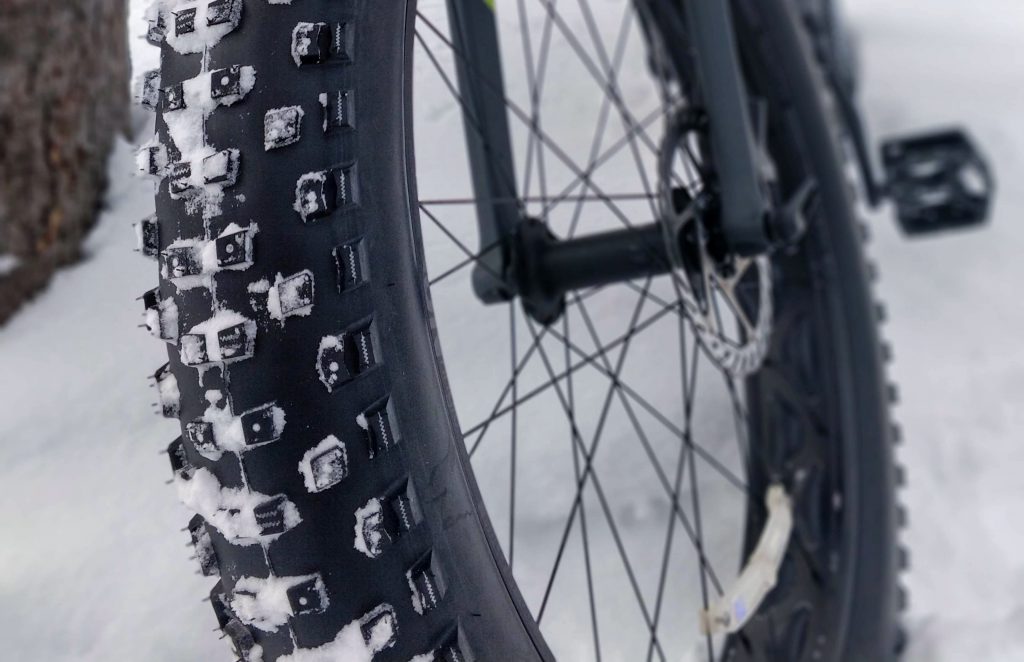
Prepare Your Equipment
Depending on conditions, some equipment is easier to prepare for winter than others. Longboarding in the snow? That’ll be tough. Bikes, on the other hand, can be modified to better handle snow and ice.
Tires and Fenders
- Lower air pressure to increase traction in cold, snow and ice. Lowering aire pressure allows the tires to contact more of the surface. Check the recommended pressure range on the sidewall and inflate at the lower end.
- Go big to get home. Not everyone can have a winter-specific fat bike like that pictured above, but you can use wider tires with more aggressive tread (or even studded tires).
- Block the spray. A front fender prevents water and muck from flying into your face (both annoying and dangerous); a rear fender keeps your behind clean and dry (no rooster tail!).
Stay Tuned… Up!
- Check your components regularly to ensure they’re in good working order, especially your brakes and pads.
- Keep bike parts like your chain clean and well lubricated.
- Wipe down your bike after each rainy/snowy ride to prevent rust.
Be Visible (this goes for everyone)
- Place reflectors on your bike, scooter or person.
- Install a front (white) light and a rear (red) light on bikes, scooters or other mobility devices.
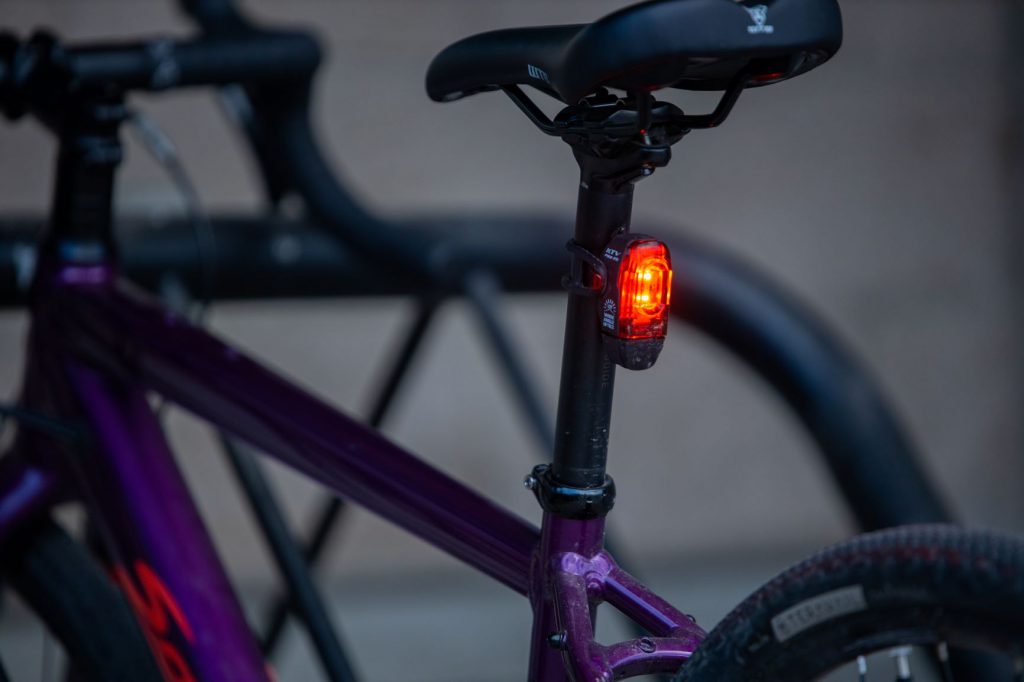
Now that you’re all fired up to keep active transportation alive through the winter, be smart when it comes to taking on severe conditions. There may be weather that is simply too much to take on, and getting a lift or using public transit is a better option. DriveBC is a good place to find road condition and weather previews.
And to all those who choose to drive through the winter… that’s OK, too. But please keep an extra lookout for cyclists, pedestrians, and other active transportation users. It’s dark these days. Be sure to clean off your entire vehicle, including windows and mirrors, and triple check before turning, changing lanes, or making other maneuvers.
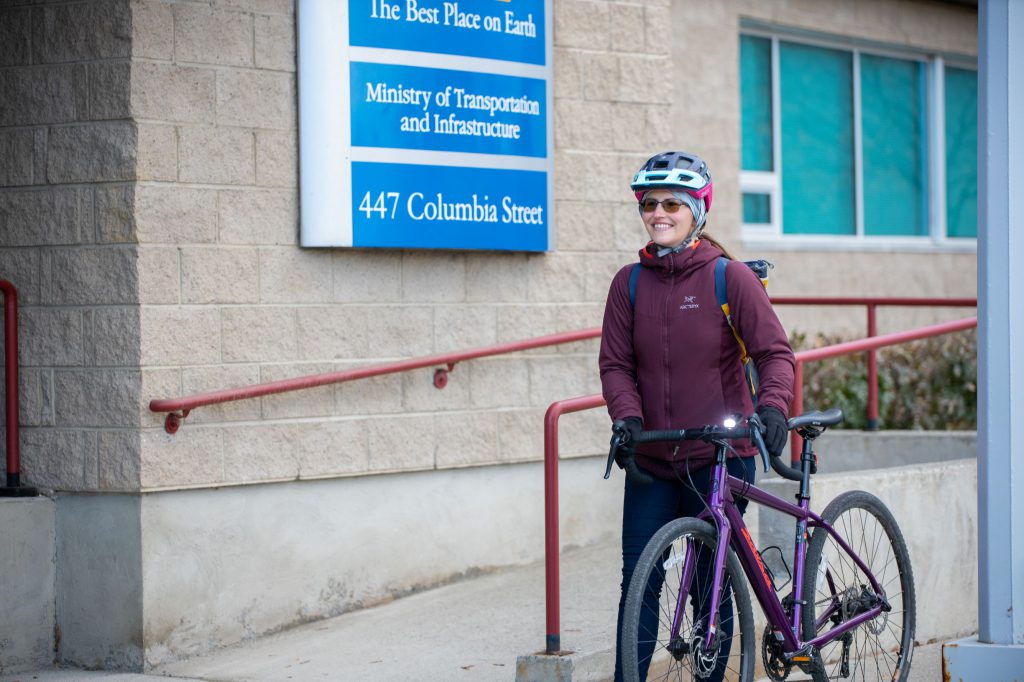
Interested in reading more about active transportation in BC? Check out the following blogs:
>> Why You Should Bike to Work (and School)
>> Behind the Scenes: Traffic Planning for Major Athletic Events
where in Kitchener ontario can u get bike tires and have bike winter weather ready
Hello Janice – we encourage you to search for that information online as we are specific to BC and aren’t able to answer.
Transportation BC. My comments are for active transportation, year round.
On TC#1 highway, approximately 1km north of the Fraser Bridge in Hope, BC is a small (30m?) bridge over the CPR Eastbound railway. (https://www.google.ca/maps/@49.3902155,-121.4610712,3a,75y,18.39h,90t/data=!3m7!1e1!3m5!1sk5rmgf91HKXt_WJUmKt-EQ!2e0!6shttps:%2F%2Fstreetviewpixels-pa.googleapis.com%2Fv1%2Fthumbnail%3Fpanoid%3Dk5rmgf91HKXt_WJUmKt-EQ%26cb_client%3Dsearch.revgeo_and_fetch.gps%26w%3D96%26h%3D64%26yaw%3D63.97914%26pitch%3D0%26thumbfov%3D100!7i13312!8i6656?hl=en ).
This bridge is narrow, with no provision for foot, or bicycle traffic.
The speed limit ON this bridge is 90 kmh!
It is absolutely terrifying to be walking or riding a bicycle on this bridge when heavy trucks are on the bridge.
Please let me know who can address this issue, so that the Chawathil First Nations and the people who live north of Hope, BC can begin to walk, or ride their bikes into Hope, for work, groceries and school.
Hello Hanns and thank you for your message. We shared your concern with our local area staff who confirmed that they are aware of the issues you have raised and that this structure has been identified for an upgrade as funding becomes available. We hope that this information is helpful.
The province of BC should audit the procedures that all agencies use to clear the snow. There should be a proper standard. Maybe group all cities into regions and have one operator in charge instead of multiple operators. In the Lower Mainland, we have over 35 different operators clearing snow and it is not working properly.
Hello Nathan,
Thanks for your suggestion and we understand your concerns. Unfortunately, we are only responsible for managing the provincial highway system (which is governed by a clear set of specification standards through our maintenance contracts). Municipalities within larger urban areas (Metro Vancouver) might be interested in your suggestion and we encourage you to share your feedback directly with them. Here’s their contact info: http://www.metrovancouver.org/
We hope that this is helpful.
Why don’t Canadians bicycle in winter?
Hint: It’s not the cold.
Hint: Not even the snow and ice.
This witty, well produced video about Oulu Finland and winter cycling explains. Very fun.
https://youtu.be/Uhx-26GfCBU
A great video – thank you for sharing. We have shared your comment and video link with our staff in Active Transportation. Safe travels!
The positive benefits to active transportation are all life-giving affirmations…something to be excited about and which will in turn excite you. I love my year-long cycle and use the bus and walking when the temperature is too low.
Agreed! Thanks for sharing, Rachel!
Heated gloves can make riding more enjoyable
A great tip – thank you for sharing Irv.
Hi
ghway 3 in very bad condition
Thick Ice RUTS
both directions through Hope/ Princeton
Totally unacceptable for today’s weather conditions
Should have been winter conditions with compact snow
Instead THICK stretches
Like driving over an icy thick cattle guard for KM’s at a time
Obviously not being properly cleared
Have experience driving Highway 5/ Highway 1/97 . Highway 24 as well as Highway 3
Have never seen a highway so
Bad
What you would expect on a side road off of a secondary highway
TOTALLY UNACCEPTABLE for a major highway
Hi Geraldine – thanks for taking the time to connect with us here to share your concerns. We take the safety of the travelling public very seriously and have shared your concerns with our local area staff for their review. The fastest way to attend to the problem or raise awareness of an issue is to tell our maintenance contractor directly. Our contractors are required to keep records of public concerns and this helps us during our auditing process to ensure the contractor is responsive to any problems brought to their attention. Here’s a list of our maintenance contractors and the ways you can connect with them to communicate your concerns: https://www2.gov.bc.ca/gov/content/transportation/transportation-infrastructure/contracting-to-transportation/highway-bridge-maintenance/highway-maintenance/contacts
This is great, please keep building cycling trails separate from other vehicular traffic.
The most dangerous part is the slide as any sized four wheelers are far greater forces than the lowly cyclist.
Thanks for your feedback, Laurie!